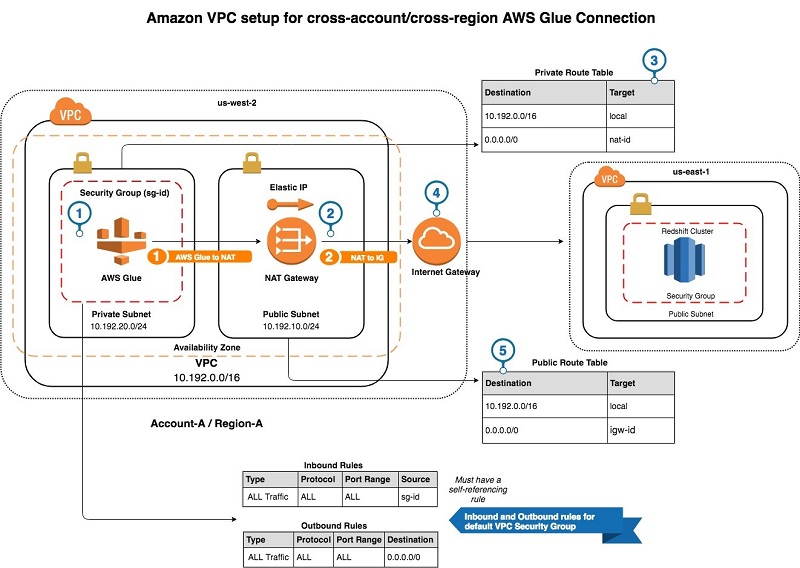The AWS offers a plethora of tools and services for processing huge volumes of data. Over the years, AWS has built many analytics services. Depending on your technical environment, you could always choose one or the other tool for data processing based on your machine learning workflows. When it comes to analytics workloads, Amazon EMR and AWS Glue are the two popular choices for processing data at scale. We take a look at the two managed services and try to understand the key differences between the two. So, let’s get started.

What is Amazon EMR?
Amazon Elastic MapReduce (EMR) is a cloud-based managed service for processing and analyzing big data quickly and cost-effectively. EMR is an industry-leading big data platform that simplifies big data analytics using tools such as Apache Spark, Apache Hadoop, Apache Hive, Apache HBase, Presto, and so on. It started as a managed environment for Apache Hadoop applications, but over the years, added support for a plenty of other projects on AWS. EMR is specially designed to reduce the maintenance burden by providing both the computing horsepower and the on-demand infrastructure to analyze such vast volumes of data. EMR makes heavy use of the Amazon S3 to store sets of data for processing and analysis results, and uses Amazon EC2 to process big data across a cluster of virtual servers. It is flexible, customizable, and it can run for both short and long instances. EMR is a prime contender for data processing at scale.

What is AWS Glue?
AWS Glue is a server-less, fully-managed Extraction, Transformation, and Loading (ETL) service provided by Amazon as part of AWS to help crawl, discover and organize data. It is a pay-as-you-go, computing service that provides automatic schema inference for your structured and semi-structured datasets. It allows you to extract the data and metadata from multiple sources like databases and build a catalog of information, which can be further used to transform the data to your target required state. It understands your data, suggests transformations, and generates ETL scripts, and on top of that, it runs them in a fully managed fashion inside a Python shell or fully managed server-less Spark environment. Based on the transforms you define on your data, Glue can automatically generate Spark scripts. Not only you can customize them, but also deploy your own scripts. Glue is built on Spark and is integrated with S3, RDS, Redshift, and any JDBC data store.
Difference between EMR and Glue
Tool
– Amazon EMR is a cloud-based managed service that makes heavy use of the Amazon S3 to store sets of data for processing and analysis results, and uses Amazon EC2 to process big data across a cluster of virtual servers. It is a fully managed Hadoop environment that provides support for a plenty of other projects on AWS, such as Apache Spark, Apache Hive, Apache HBase, Presto, and so on. AWS Glue, on the other hand, is a server-less ETL tool that provides automatic schema inference for your structured and semi-structured datasets.
Pricing
– The pricing structure of Amazon EMR is simple and predictable. You are charged on a second basis meaning you pay for every second you use, with a minimum of one-minute. The hourly rate depends on the instance type used and starts from $0.011 per hour and goes up to $0.27 per hour. The charges are like EC2 prices added to the data processing cost. The AWS Glue pricing is based on DPUs (data processing units) and you are billed by the second for crawlers and ETL jobs. It usually costs you around $0.44 per hour per DPU in increments of 1 second, rounded up to the nearest second.
Flexibility & Scalability
– Amazon EMR is a fully managed cluster platform that simplifies the setup and management of the cluster of Apache Hadoop and MapReduce components. It provides a simple way of scaling running workloads depending on your processing requirements. It allows you to resize your cluster as you seem fit and additionally, configure one or more instance groups for processing. AWS Glue is also flexible and easily scalable as it works on a fully managed, server-less environment. It authors highly scalable ETL jobs for distributed processing on a scale-out Apache environment.
Use Case
– Amazon EMR is a fully managed environment that provides both the computing horsepower and the on-demand infrastructure to analyze huge volumes of data quickly and cost effectively. It simplifies running big data frameworks, such as Apace Hadoop and Apache Spark on AWS for processing big data at scale. It is often a good replacement for on-premises Hadoop migrations. AWS Glue is a server-less ETL platform that helps crawl, discover and organize data you own, and prepare it for analytics. It is ideal for new workloads.
EMR vs. Glue: Comparison Chart

Summary
In a nutshell, Amazon EMR is a fully managed environment that provides both the computing horsepower and the on-demand infrastructure to analyze huge volumes of data quickly and cost effectively. So, when you have the entire infrastructure available, EMR is the best option for you. AWS Glue, on the other hand, is useful when you have flexible requirements and as it is server-less, you do not need to configure and manage any computing resources. Glue simply helps crawl, discover and organize data you own, and prepare it for analytics.
- Difference Between Caucus and Primary - June 18, 2024
- Difference Between PPO and POS - May 30, 2024
- Difference Between RFID and NFC - May 28, 2024

